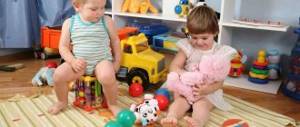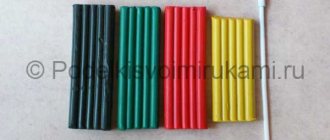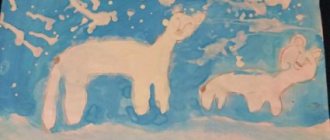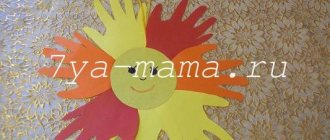Lesson notes for the senior group. Feathered friends
Scenario for educational activities “Feathered Friends”.
Author: Lyubov Mikhailovna Tsareva Place of work: MBOU DOD DDT “Planet”. Description : Summary of a lesson on speech development for preschool children, intended for educators and teachers of additional education. Goal: development of monologue and dialogic speech of children. Objectives: 1. To consolidate children’s knowledge about birds acquired in earlier classes. 2.Expand children’s understanding of different types of birds: migratory, wintering, domestic. 3. Foster a caring attitude towards living nature. Form of organization of activity: group. Equipment: tape recorder, TV panel. Vocabulary work: plumage, migratory, wintering, little birds. Materials for the lesson: pictures of different birds, audio recording, colored paper.
Progress of educational activities
1.
Organizational stage: Greeting, poems to organize attention: “We are not too lazy to say hello, “Hello,” we say every day to Mom, Dad, Grandmother and friend. Wish everyone good health, Smile at each other.” 2. Preparatory stage: Exercise “Cheerful mood”: “We will smile at each other, Say kind words. Let's laugh at the sadness, Let's shout loudly "Hurray!" Children listen to “birdsong” music. Riddles about birds:
In a gray feather coat And in the cold he is a hero, Jumps, frolics in flight, Not an eagle, but still a bird.
(Sparrow). He is in his forest chamber Wearing a colorful robe, He is healing trees, He knocks - and it’s easier. (Woodpecker). Wears a gray vest. But the wings are black. You see, twenty couples are circling. And they shout: Kar! Kar! Kar! (Crow). The brothers stood on stilts, looking for food along the way. Whether running or walking, They can’t get off their stilts. (Cranes). Sleeping or bathing Still doesn’t take off his shoes. Day and night on legs Red boots. (Goose). 3.Main stage: Conversation.
Questions: -Why do you think people love birds?
-Which birds are called “migratory”? - Why? - Which ones are called “winterers”? -Do you agree with the proverb “It’s good for a bird in a golden cage, and even better on a green branch.” - Why? Etc. Reading “Bird” by A. Pchelnikov
.
— Question: What can you promise a bird to make it stay? Didactic game "Flies - does not fly."
(A sparrow flies, a cat does not fly, etc.).
Instead of answering, children can show hand movements. Purpose of the game: to consolidate general concepts: “birds”, “animals”. — Question: What birds do not fly? (Chicken, ostrich, penguin). Tongue twisters:
Three magpies chattered on the tree.
Three little birds are flying through three empty huts. 4. Final stage: Making a feeder and birds using the origami method.
The teacher’s final word: “It’s time to finish the lesson, our children are tired. “Thank you” to everyone - let’s say it together, the guys need a rest. Play, tumble, To stay healthy.”
We recommend watching:
Leisure scenario in kindergarten in the senior group “Greetings Day” Summary of thematic leisure in the senior group on the theme “Sister Bird” Leisure scenario “Journey through Pushkin’s fairy tales” for children of senior preschool age Sports leisure in the senior group. Scenario
Similar articles:
Leisure and entertainment in kindergarten in the senior group
Conversation in the senior group of kindergarten on the topic: How people use leather and wood
Summary of a lesson on cognitive development in the senior group. Table manners
Summary of a lesson on cognitive development in the senior group. Rules of life
Lesson notes for the senior group of kindergarten
Abstract of the GCD on the topic “Birds are our friends.” Senior group
GCD in the senior group “Birds are our friends”
GOAL: to identify children’s knowledge about birds. Instill a love for nature and cultivate a caring attitude towards it. OBJECTIVES :: generalize children’s knowledge about wintering and migratory birds; teach logically, think, cultivate interest in the inhabitants of nature, the ability to sympathize, empathize with wintering birds, take care of birds - feed them. PRELIMINARY WORK: examination of illustrations;
reading books and stories; asking riddles; observations; conversations; bird drawing, applique, modeling. Progress of the lesson:
Educator: Guys, we have a very interesting lesson today. Say: Sparrows, swifts, penguins, bullfinches, rooks, peacocks, parrots and tits: in one word this is -. (BIRDS) Educator: That's right guys, today we will talk about birds. What birds do you know? What do we call the birds that winter with us? What are the names of the birds that come to us in the spring? How do migratory birds know when it's time to leave? (children express their guesses). Why do you think birds fly away to warmer climes? (children’s statements) Educator: Now stand in a circle and let’s play. The game is called "Migratory - Wintering". I will throw a ball to you and name the bird, and you will say whether it is a migratory bird or a wintering one. (a game is being played). Educator: What time of year is it now? Children: Winter - How do birds live in winter? Children: Hungry birds, insects in hibernation, fruits, berries, grass seeds under the snow. Birds find little food in winter. From morning to evening they look for crumbs of food. Birds' downy, warm, feather coats protect them from cold, but not from hunger Educator : In harsh years, out of ten tits, only one survives during the winter. Nine die of starvation. - It's a pity? Children: very sorry Teacher: - Listen to N. Gribchev’s poem. Well, it’s frosty, well, it’s frosty, Nose out - oh-oh-oh! Even white birches have an icy gray crust. Even squirrels are restless Waiting for warmth They don’t scurry off the branch onto a branch, They don’t climb out of the warmth And a hungry tit quietly cries at the window: “There’s nowhere to warm up and feed, No boogers, no grain. The day smokes in the frosty distance, The nights are cold and dark, I’m freezing, I’m starving, “I won’t live to see spring!” - Guys, who can help the wintering birds? (people) Educator: How can people help the birds? (make feeders, feed the birds.) Educator: You can offer the titmouse a piece of unsalted lard; sparrows, bullfinches - bread crumbs, seeds, cereals, grains. And also, in order to feed the birds, you must follow some rules: 1. The birds must be fed in the same place, preferably at the same time. 2. Birds must be fed daily; You can’t feed it from time to time! Especially in cold weather, birds need food every day in order for them to survive. 3. When feeding, do not litter, pick up trash after yourself. Educator:: Birds protect forests and fields from pests, insects, and birds also predict the weather. There are some folk signs: – If sparrows bathe in water in cold weather, it means warmth; – Bullfinches are chirping under the windows – there will be a thaw; – Tits have moved to a person’s home – the beginning of winter, winter will be snowy and cold.. Tell your moms and dads about the signs. Ask your parents what folk signs about birds they know. Educator: Guys, let's imagine that we are birds . Physical education. It's morning! Stop sleeping! Before you fly, you need to stretch your wings. Up wing, down wing, And now it’s the other way around! (One straight arm is raised, the other is lowered, the arms change with a jerk.) We spread the wings to the sides, and bring the shoulder blades together. (Hands in front of the chest, jerking your arms to the sides.) Bend right and left, And bend back and forth. (Tilts left and right, forward and backward.) On command we squat - One-two-three-four-five. Let's do the exercise. Chur, friends, don't lag behind! (Squats.) Wings to the sides and fly. Educator: you’ve had a rest, now guess the riddles? Who looks at the sidewalk and shouts to us from a branch: “Karr!”? Chop a piece of loaf - It will fly in to eat... (crow) They flew in in a flock of loud birds with a bright red breast. Look outside the window - There on the branches... (bullfinches) Who flaunts on the branch In a yellow festive vest? This little bird And her name is... (titmouse) What kind of bird on the bough In the grove sings: “Ku-ku”? An inconspicuous pestle, And her name is... (cuckoo) Guess what kind of bird: At night she can’t sleep at all, Sleeping grass won’t help, She only falls asleep during the day... (owl) Educator Guys, birds are our friends, we can’t offend them. Tell me, what benefits do birds bring? (children's answers) Educator: How can we help birds in winter? (make a feeder) That's right, you can make feeders. Homework assignment. Make a feeder at home with your parents and bring it to kindergarten. Lesson summary: Birds are our faithful helpers, protectors of our forests, fields, gardens, and vegetable gardens from harmful insects and rodents. We can't do without birds.
We recommend watching:
Summary of GCD for introducing older preschoolers to the work of the poet Fet Summary of plot-based GCD in physical education for children of the senior group Summary of GCD in the senior group of compensatory orientation GCD in kindergarten for older preschoolers
Similar articles:
Summary of GCD in the senior group on the topic “Communication”
Summary of GCD in the senior group of kindergarten on the topic “Relaxation”
Summary of a lesson on cognition in the senior group on the topic “Dairy products”
Summary of a lesson on cognition in the senior group on the topic “Construction professions”
Abstract of educational activities for cognition in the senior group of kindergarten on the topic “Russian folk crafts”






